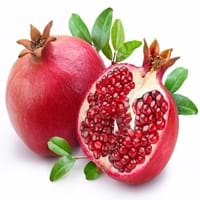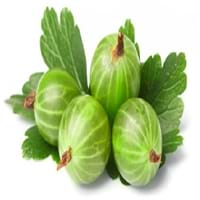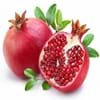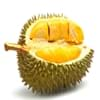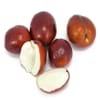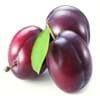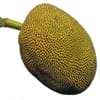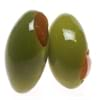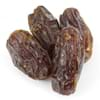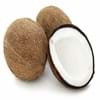Health Benefits
Cancer prevention, Heart care, Helps in cartilage regeneration, Improves stomach health, Increase in haemoglobin, Increases metabolic rate, Prevents constipation
Arthritis prevention, Cancer prevention, Liver health, Scurvy treatment, Ulcer prevention
General Benefits
Boosts immune system, Controls blood pressure, Controls blood sugar levels, Digestive aid, Maintains healthy cholesterol level
Boosts immune system, Digestive aid, Eye care, Fights against infections, Improves blood circulation, Maintains healthy cholesterol level, Sore throat treatment, Treatment of common cold
Skin Benefits
Anti-aging benefits, Skin rejuvenation, Treatment of acne
Anti-aging benefits, Brightens and lightens complexion, Reduces wrinkles, Treatment of acne
Hair Benefits
Prevents hair loss, Promotes longer and healthier hair, Treatment of dandruff
Prevents hair loss, Promotes longer and healthier hair, Treatment of dandruff
Allergy Symptoms
Abdominal pains, Anaphylaxis, Itching
Constipation, Diarrhea, Drop in blood pressure, Eczema, Facial swelling, Hives, Hoarseness, Itching, Itchy eyes, Nausea, Red rash, Redness of eyes, Runny nose, Sore eyes, Swelling of mouth, tongue or lips, Tingling sensation in mouth, Vomiting
Side Effects
Allergic reaction, Cold, Breathing difficulty, Irritation, Swelling
Gastric irritation
Best Time to Eat
Best if taken as a breakfast (or empty stomach), As a snack in the late afternoon, Eat the fresh ones, avoid mixing with any other foods, don't eat after meal., Morning time (before lunch)
Best if taken as a breakfast (or empty stomach), As a snack in the late afternoon, Don't consume at night and before bed, Morning time (before lunch)
Vitamin B5 (Pantothenic Acid)
Vitamin C (Ascorbic Acid)
Vitamin K (Phyllochinone)
Not Available
Lutein+Zeaxanthin
Not Available
Phytosterol
Not Available
Calories in Fresh Fruit with Peel
Not Available
Calories in Fresh Fruit without Peel
Not Available
Calories in Frozen Form
Not Available
Not Available
Calories in Dried Form
Not Available
Calories in Canned Form
Not Available
Type
Tree fruit
Berry, Tree fruit
Varieties
Balegal, Crab, Cloud, Francis, Freshman and Granada
Whinham's Industry, Green Hansa, Clark, Chataqua, Invicta, Keepsake, Lepaa Red, May Duke and Whitesmith
Color
Dark red, Light pink-red
Green, Purple, Red, Yellow
Inside Color
Red
Yellowish Green
Taste
Juicy, Sweet
Astringent
Origin
India, Iran
Africa, Europe, South-West Asia
Soil Type
Clay, Sand
Loamy, Well-drained
Climatic Conditions
Cold, Dry, Hot
Dry, Warm
Facts about
- Pomegranate means apple with many seeds.
- It was called as the “apple of Grenada” in early English.
- In Hinduism, this fruit symbolizes prosperity and fertility.
- Pomegranate trees can live upto 200 years.
- Traditionally, kids were told that babies were found under gooseberry bushes.
- They are also called 'fayberries' due to an ancient belief that fairies hid in gooseberry bushes to avoid danger.
Top Producer
Iran
Germany
Other Countries
Africa, India, Middle east, Pakistan
Austria, Czech Republic, Denmark, Hungary, Lithuania, Poland, Russia, Ukraine, United Kingdom
Top Importer
Europe
Not Available
Top Exporter
India
Not Available
Botanical Name
Punica granatum
Ribes uva-crispa
Synonym
Punica malus
Ribes grossularia
Subkingdom
Tracheobionta
Tracheobionta
Division
Magnoliophyta
Magnoliophyta
Class
Magnoliopsida
Magnoliopsida
Subclass
Rosidae
Dillenhidae
Order
Myrtales
Saxifragales
Family
Lythraceae
Grossulariaceae
Species
P. granatum
R. uva-crispa
Generic Group
Pomegranate
Saxifrage
Difference Between Pomegranate and Gooseberry
We might think that Pomegranate and Gooseberry are similar with respect to nutritional value and health benefits. But the nutrient content of both fruits is different. Pomegranate and Gooseberry Facts such as their taste, shape, color, and size are also distinct. The difference between Pomegranate and Gooseberry is explained here.
The amount of calories in 100 gm of fresh Pomegranate and Gooseberry with peel is Not Available and 44.00 kcal and the amount of calories without peel is 83.00 kcal and Not Available respectively. Thus, Pomegranate and Gooseberry belong to High Calorie Fruits and Low Calorie Fruits category.These fruits might or might not differ with respect to their scientific classification. The order of Pomegranate and Gooseberry is Myrtales and Saxifragales respectively. Pomegranate belongs to Lythraceae family and Gooseberry belongs to Grossulariaceae family. Pomegranate belongs to Punica genus of P. granatum species and Gooseberry belongs to Ribes genus of R. uva-crispa species. Beings plants, both fruits belong to Plantae Kingdom.
